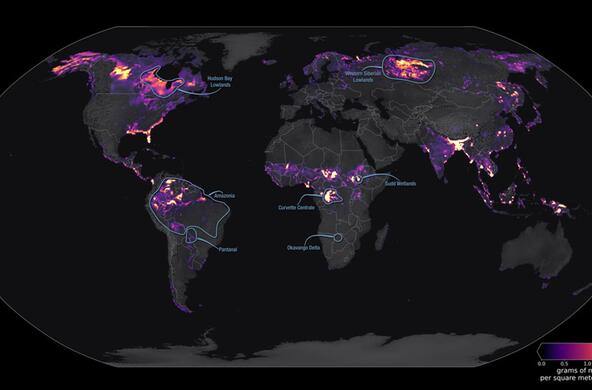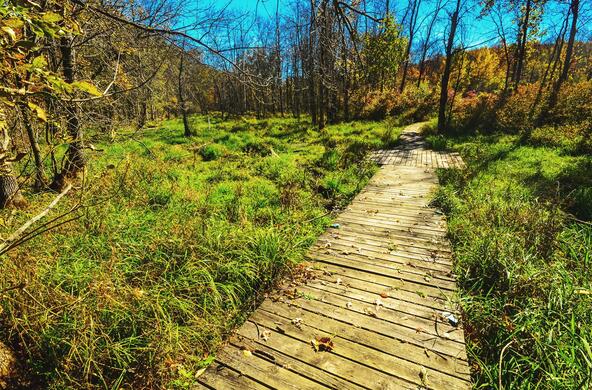Lots of folks don’t understand the value of small wetlands and ponds. When I lived in upstate New York, land developers hated wetlands because they reduced the housing density they could build on a new tract. A few years ago I was traveling with a woman who proudly told me that she dumped her grass clippings in the wetland behind her house in Arizona. (For this moment, I will let go of the wisdom of a lawn in Phoenix). Many people associate wetlands with mosquitoes.
But, small wetlands—often those less than ¼ acre—provide a number of “ecosystem services” that improve the quality of daily life and add value to property wherever we live.
The value of wetlands extends beyond those evenings in early spring, when a chorus of spring peepers makes the woods alive with the sound of their music. The value of wetlands extends beyond the wide eyes of a young child who has come upon a male wood duck in a secluded forest pond—wondering how anything could be so beautiful and brightly colored. These are only one source of value of wetlands—why people should want them in the landscape.
But, beyond aesthetics and the intangible value of nature, wetlands also provide real economic value to our property.
Many rural and suburban neighborhoods are extraordinarily dependent upon groundwater for human use; for example, in Dutchess County, New York there are nearly 35,000 private wells. Adequate recharge of groundwater is a growing issue for that region, as warmer summer temperatures increase the rates of evaporation of soil moisture and reduce percolation of surface waters. Vernal and ephemeral ponds are extremely effective for transfer of surface water to groundwater, so their value to communities extends far beyond their actual location and area on the landscape. Buyers of property in which the wetlands have been destroyed may find their water supplies limited and are likely to demand municipal water as a replacement—a real cost to all taxpayers.
Small ephemeral wetlands or vernal pools normally contain water only during the spring, largely derived from snowmelt runoff. These wetlands are important breeding grounds for amphibians, which control mosquitoes during the period when water is present. Moreover, small wetlands are important loci for the capture and infiltration of moisture from surface runoff, which might otherwise be lost, and are important areas for the bacterial cleansing of nitrogen from runoff, known as denitrification. These small depressions also capture the surface runoff from summer thundershowers, reducing the risk of flooding in downslope regions. It’s not that larger wetlands do not also perform these tasks, but a natural array of smaller wetlands across the landscape enhances these important ecosystem properties that we all depend on.
Some have argued that protective laws should not extend to seasonal wetlands, since they are not easily recognized during dry periods. This is incorrect. Practicing soil scientists recognize distinctive horizons—known as diagnostic horizons—in the soils of these areas, classifying them as hydric soils. Wetland soil delineation is described in detail by Faulkner et al. (1989) and Megonigal et al. (1993), and it is well accepted by all soil scientists.
Increasingly, ecologists are appreciating the role that soil bacteria play in the cleansing of surface waters, especially in natural wetlands. One group of bacteria, known as denitrifying bacteria, convert soluble nitrate in surface waters to harmless nitrogen gas, which is emitted to the atmosphere. Nitrate in surface water is derived from the excessive use of fertilizer and linked to a number of problems in human health. A network of vernal pools, essentially acting as a set of vernal dams, slows springtime runoff from the landscape, enhancing infiltration of water and denitrification by soil bacteria. Denitrification rates are often exceptionally high in seasonal wetlands (Capps et al. 2014).
Because amphibians spend the drier months in the surrounding forest, these vernal wetlands need preservation in the context of the entire landscape. Studies by Baldwin et al. (2006) show upland summertime movements up to 300 meters (~900 feet) by frogs and salamanders breeding in ephemeral wetlands, indicating the ideal size of the appropriate buffer zone that should be maintained around these properties. A few species, such as wood frogs, disperse widely across the landscape, but other species show only limited immigration to new areas when their native breeding grounds are destroyed. Vasconcelos and Calhoun (2004) report that frogs are 90% faithful to their birth habitat. I wonder how they do it, but most of these small animals find their way home, rather than invade new habitats.
You might suspect that vernal wetlands would harbor insect populations that carry West Nile virus and other disease to suburban inhabitants, but in a healthy vernal system, these insects are maintained at low levels by the amphibians that feed on them. Regulations that preserve small wetlands will also preserve habitat for a variety of species in the landscape; insects and small amphibians are the food for many animals, including birds. Work by Rick Ostfeld has shown that high species diversity in nature is effective in reducing several diseases transmitted to humans.
We should not think that more stringent regulations to preserve small wetlands will simply hamper economic progress and rights of private landowners in the region. Wetlands offer real and tangible benefits to the landowner and the regional citizenship. Wetlands preservation is important for the quality of future life.
References:
Baldwin, R.F., A.J.K. Calhoun, and P.G. DeMaynadier. 2006. Conservation planning for amphibian species with complex habitat requirements: A case study using movements and habitat selection of the Wood Frog (Rana sylvatica). Journal of Herpetology 40:442-453.
Calhoun, A.J.K. and P.G. DeMaynadier. 2007. Science and conservation of vernal pools in northeastern North America. CRC Press, Boca Raton.
Capps, K.A., R. Rancatti, N. Tomczyk, T.B. Parr, A.J.K. Calhoun and M. Hunter. 2014. Biogeochemical hotspots in forested landscapes: the role of vernal pools in denitrification and organic matter processing. Ecosystems 17: 1455-1468.
Faulkner, S.P., W.H. Patrick, and R.P. Gambrell. 1989. Field techniques for measuring wetland soil parameters. Soil Science Society of America Journal 53:883-890.
Groffman, P.M., G.C. Hanson, E. Kiviat, and G. Stevens. 1996. Variation in microbial biomass and activity in four different wetland types. Soil Science Society of America Journal 60:622-29.
Megonigal, J.P., W.H. Patrick, and S.P. Faulkner. 1993. Wetland identifications in seasonally flooded forest soils: Soil morphology and redox dynamics. Soil Science Society of America Journal 57:140-149.
Ostfeld, R.S. 2009. Biodiversity loss and the rise of zoonotic pathogens. Clinical Microbiology and Infectious Disease 15:40-43.
Semlitsch, R.D. and J.R. Bodie. 2003. Biological criteria for buffer zones around wetlands and riparian habitats for amphibians and reptiles. Conservation Biology 17: 1219-1228.
Skelly, D.K., E.E. Werner, and S.A. Cortwright. 1999. Long-term distributional dynamics of a Michigan amphibian assemblage. Ecology 80: 2326-2337.
Vasconcelos, D. and A.J.K. Calhoun. 2004. The movement patterns of adult and juvenile Rana sylvatica and Ambystoma maculatum in three restored seasonal pools in Maine. Journal of Herpetology 38:551-561.







